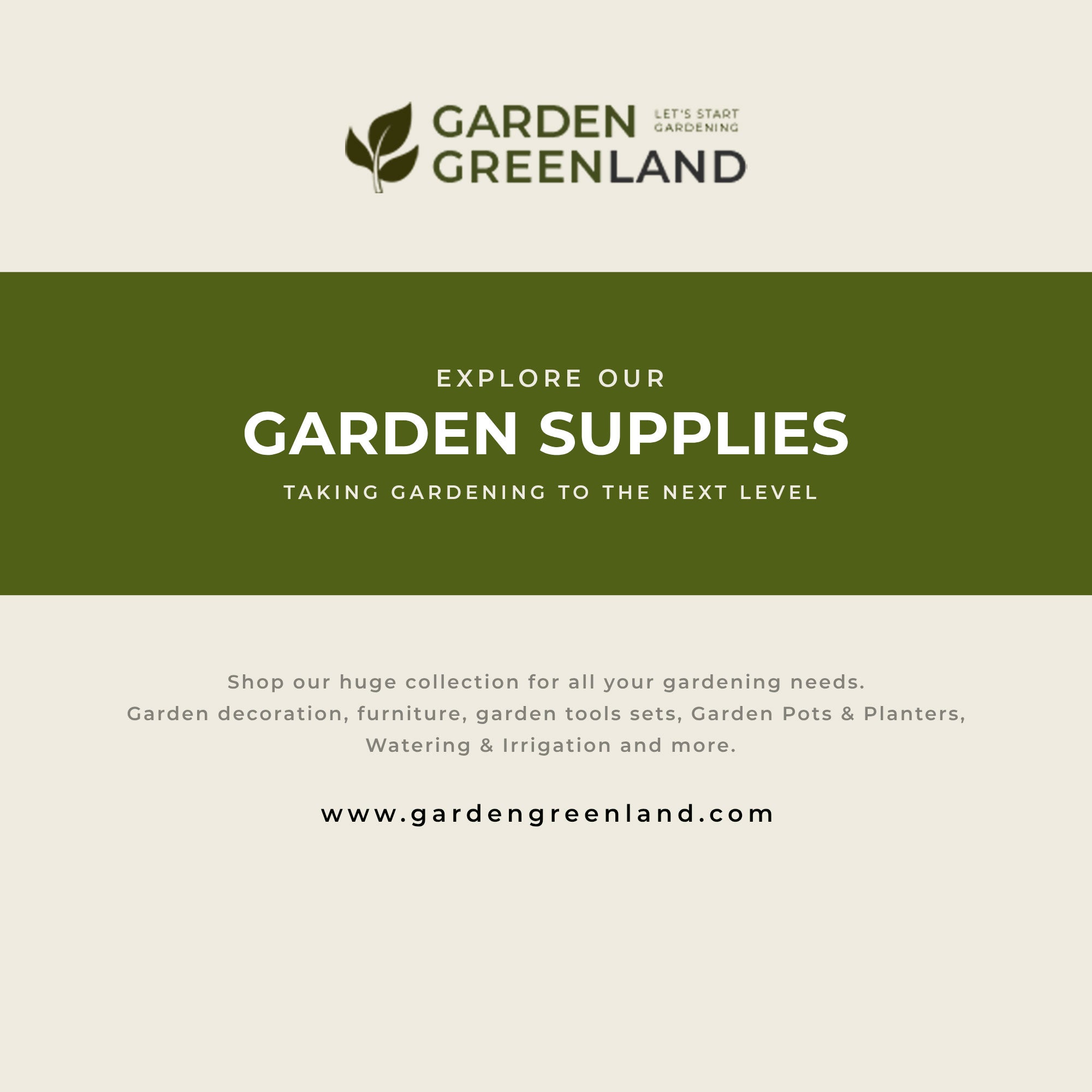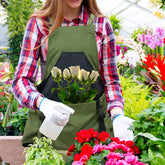Is There a Difference Between Garden Soil and Potting Soil?
Table of Contents
- Understanding Garden Soil
- Understanding Potting Soil
- Key Differences Between Garden Soil and Potting Soil
- Ideal Situations for Each Soil Type
- Enhancing Your Gardening Experience with Garden Greenland
- Frequently Asked Questions
- Conclusion
Gardening is not just a hobby; it's a therapeutic practice that connects us deeply with nature. As we dig our hands into the earth, we nurture not only plants but also our well-being. Yet, many budding gardeners often find themselves puzzled by the variety of soils available and the specific needs of their plants. A common question arises: is there a difference between garden soil and potting soil? The answer is a resounding yes, and understanding these differences can dramatically affect the health and growth of our cherished plants.
At Garden Greenland, our journey began with a passion for the earth and a commitment to redefine the home gardening experience. We believe that everyone deserves to look and feel connected to nature. Therefore, in this blog post, we will explore the distinct characteristics of garden soil and potting soil, helping you make informed decisions about which soil type to use in various gardening scenarios. By the end, you'll have a clearer understanding of how to select the right soil for your gardening needs, leading you to cultivate a thriving green space.
Understanding Garden Soil
To appreciate the differences, we first need to understand what garden soil is. Garden soil, often referred to as topsoil, is the layer of soil that sits on the surface of the earth. It is typically composed of a mix of organic matter, minerals, water, and air.
Composition of Garden Soil
- Organic Matter: This includes decomposed plant and animal material, which enriches the soil with nutrients. Organic matter improves soil structure, increases its moisture retention capacity, and promotes healthy microbial activity.
- Minerals: Essential minerals like sand, silt, and clay make up the bulk of garden soil. Each component plays a crucial role in determining the soil's texture and drainage capabilities. For instance, sandy soils drain quickly but may require more frequent watering, while clay soils retain moisture but can become compacted.
- Microbial Life: Garden soil is teeming with beneficial microorganisms that break down organic matter and release nutrients. These organisms help in establishing a healthy ecosystem that supports plant growth.
Characteristics of Garden Soil
- Weight and Density: Garden soil tends to be heavier and denser than potting soil. While this density can help retain moisture and stabilize plants, it may not be the best choice for container gardening, where root health and aeration are critical.
- Nutrient Variability: The nutrient content in garden soil can vary widely depending on location and amendments. It can contain pathogens and pests, making it less suitable for indoor plants, where a sterile environment is preferred.
- Uses: Garden soil is ideal for planting in garden beds, flower borders, and vegetable patches. It can be mixed with native soil to improve its quality and structure.
When to Use Garden Soil
We recommend using garden soil when planting flowers, shrubs, and vegetable gardens directly in the ground. It provides a stable environment for larger plants that can establish deep root systems. Additionally, garden soil can be used as a top dressing in existing beds to improve soil quality throughout the growing season.
Understanding Potting Soil
Now that we've delved into garden soil, let's explore potting soil. Despite its name, potting soil is often misleading as it may not contain any actual soil. Instead, potting soil is a blend of organic materials specifically formulated for container gardening.
Composition of Potting Soil
- Organic Materials: Common components include peat moss, coconut coir, compost, and bark. These materials are lightweight, promote aeration, and retain moisture effectively.
- Drainage Enhancers: Potting mixes often contain perlite or vermiculite, which improve drainage and prevent soil compaction. This is crucial for container plants that need their roots to breathe.
- Nutrients: Potting soil typically includes slow-release fertilizers to provide essential nutrients over time. This ensures plants receive a balanced diet throughout their growth cycle.
Characteristics of Potting Soil
- Lightweight and Aerated: One of the most significant advantages of potting soil is its lightweight nature. This allows for better root development and prevents the risk of overwatering, which can lead to root rot.
- Sterile: Unlike garden soil, potting soil is often sterilized to eliminate pests and pathogens. This makes it a safer choice for indoor plants and seedlings.
- Customizable: Potting mixes can be tailored based on the specific needs of different plants. For instance, cacti and succulents thrive in well-draining mixes, while tropical plants prefer moisture-retentive blends.
When to Use Potting Soil
We recommend potting soil for all container gardening applications. Whether you're nurturing houseplants, herbs, or annuals, potting soil provides the ideal environment for healthy root growth and nutrient uptake. Its formulation is designed to meet the unique challenges presented by container gardening.
Key Differences Between Garden Soil and Potting Soil
Understanding the distinctions between these two types of soil can greatly impact your gardening success. Here’s a summary of the key differences:
| Feature | Garden Soil | Potting Soil |
|---|---|---|
| Composition | Contains native soil, organic matter, and minerals | Typically a mixture of organic materials, drainage enhancers, and fertilizers |
| Weight | Heavier and denser | Lightweight and aerated |
| Nutrient Content | Variable, often dependent on amendments | Pre-mixed with slow-release fertilizers |
| Microbial Life | Rich in beneficial microorganisms | Generally sterile |
| Uses | Best for in-ground planting | Ideal for container gardening |
Ideal Situations for Each Soil Type
While both garden soil and potting soil have their merits, knowing when to use each can maximize plant growth and health.
When to Choose Garden Soil
- In-Ground Planting: Use garden soil for larger plants that will benefit from deep root systems, such as shrubs, trees, and perennials.
- Improving Native Soil: Mix garden soil with existing native soil to enhance its nutrient profile and texture.
- Top Dressing: Apply garden soil as a top layer in garden beds to retain moisture and provide nutrients throughout the growing season.
When to Choose Potting Soil
- Container Plants: Always use potting soil for houseplants, herbs, and any annuals in pots to ensure proper drainage and aeration.
- Seed Starting: Potting soil is ideal for starting seeds indoors, as it provides a sterile environment free from pathogens.
- Customized Mixes: For specialized plants such as orchids or succulents, you can find tailored potting mixes designed to meet their unique needs.
Enhancing Your Gardening Experience with Garden Greenland
At Garden Greenland, we are dedicated to helping you embrace your green thumb, one gardening essential at a time. Our premium gardening products are meticulously selected to address the unique needs of modern gardeners, ensuring optimal results and a superior gardening experience.
Explore Our Collections
To elevate your gardening journey, we encourage you to explore our curated collections:
- Garden Tools Collection: Find high-quality tools designed to make your gardening tasks easier and more enjoyable.
- Garden Clothes Collection: Dress comfortably while you garden, with clothing that is both functional and stylish.
Frequently Asked Questions
What is the best type of soil for potted plants?
Potting soil is the best choice for potted plants as it is designed for container gardening, providing the right balance of aeration, drainage, and nutrients.
Can I use garden soil in pots?
While it might be tempting, we do not recommend using garden soil in pots. Its heaviness and density can lead to poor drainage and root rot.
How often should I replace potting soil?
It is advisable to refresh potting soil every year or two, depending on plant growth and nutrient depletion. Consider replacing it when you notice that the soil is compacted or when plants seem to be struggling.
Can I mix garden soil and potting soil?
Mixing garden soil with potting soil is generally not recommended. Each type serves a specific purpose, and combining them can compromise drainage and nutrient delivery, especially in containers.
How do I know if my garden soil is good?
Good garden soil should have a dark color, crumbly texture, and a pleasant earthy smell. It should also retain moisture without becoming waterlogged.
What should I look for in potting soil?
When selecting potting soil, look for a mix that includes peat moss or coconut coir, perlite or vermiculite for drainage, and a balanced nutrient profile with slow-release fertilizers.
Conclusion
In summary, understanding the differences between garden soil and potting soil is crucial for any gardener looking to cultivate thriving plants. Each type of soil serves a specific purpose and is formulated to meet the unique needs of different gardening environments. By using the right soil for the right application, we can nurture our plants effectively and enjoy the beauty they bring to our lives.
At Garden Greenland, we are committed to providing you with the highest quality gardening products to help you succeed in your gardening endeavors. Explore our Garden Equipment Collection and discover tools and resources designed to support your gardening journey. Together, we can transform any space into a flourishing garden that enhances our connection to nature. Happy gardening!









